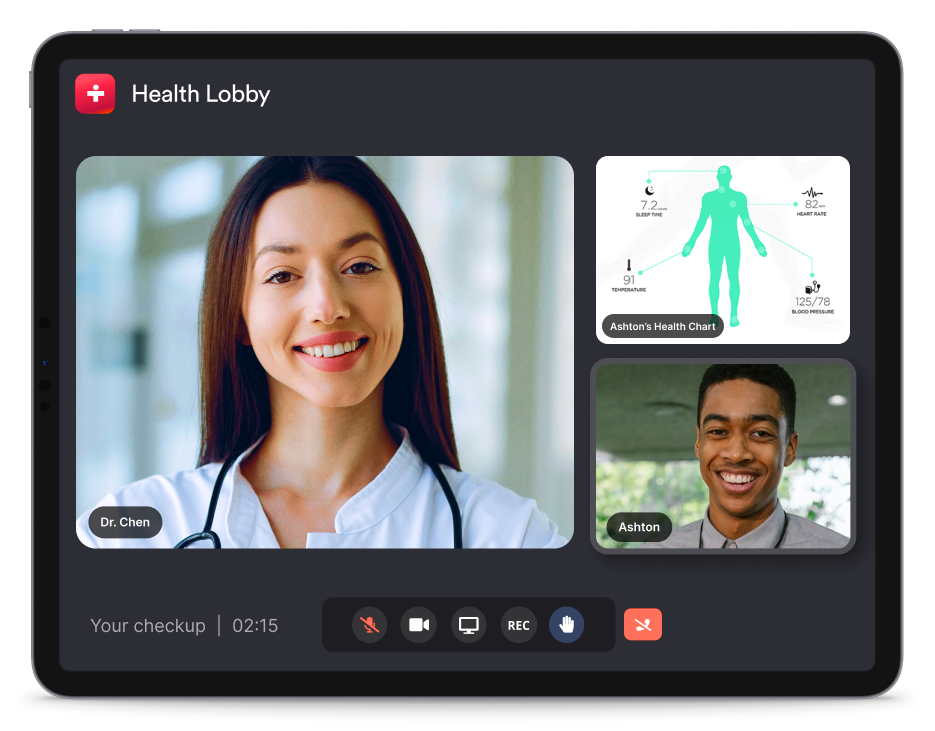


Imagine receiving medical attention from the comfort of your home, or consulting with a healthcare specialist in real time. This is not a futuristic fantasy; this is the reality of telehealth, and a key driver behind this transformation is real-time communication technology.
Here at LiveSwitch, we help our customers through this transformation by providing them with a Web Real-time Communication Technology (WebRTC) engine that enables them to achieve the following capabilities:
Leveraging real-time communication technologies such as WebRTC in telehealth applications certainly offers a multitude of benefits for both patients and healthcare professionals. For one, this bridges the geographical gaps and extends the availability of quality healthcare for those living in remote areas or with mobility limitations. It also allows for continuous data collection through remote monitoring, making it ideal for proactive intervention and enhancing chronic disease management. Lastly, this also streamlines the workflow in the healthcare industry and reduces the costs associated with in-person visits.
While the benefits of real-time communications are clear, there are still challenges that need to be considered. The primary concerns are security and privacy. Healthcare providers must ensure the platforms they use comply with HIPAA regulations to protect patient data. Another challenge is that it could create a digital divide for the portion of the population that does not have access to the internet or the necessary devices to use telehealth.
As telehealth technology continues to evolve, we can expect even more sophisticated tools for remote monitoring, virtual consultations, and collaborative care. Integration with Artificial Intelligence (AI) is the most obvious one, where AI can help with the analysis of patient data and offer insights to providers during consultations. The use of Virtual Reality (VR) technologies could also create more immersive consultations, enhancing the physical examinations conducted remotely. Lastly, we can also expect telehealth to be adapted widely across various branches in the telehealth vertical, such as in the mental health and dermatology areas.
LiveSwitch is the real-time audio and video provider of choice among the leading brands in telehealth. If you’re thinking of building your telehealth application with WebRTC technology, get in touch with our team or check out our telehealth demo here!